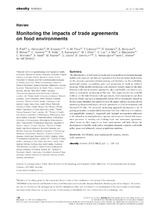| dc.contributor.author | Friel, S. | |
| dc.contributor.author | Hattersley, L. | |
| dc.contributor.author | Sanders, David | |
| dc.contributor.author | Snowdon, W. | |
| dc.contributor.author | Thow, A. M. | |
| dc.contributor.author | Lobstein, T. | |
| dc.contributor.author | Barquera, S. | |
| dc.contributor.author | Mohan, S. | |
| dc.contributor.author | Hawkes, Corinna | |
| dc.contributor.author | Kelly, B. | |
| dc.contributor.author | Kumanyika, S. | |
| dc.contributor.author | L’Abbe, M. | |
| dc.contributor.author | Lee, A. | |
| dc.contributor.author | Ma, J. | |
| dc.contributor.author | Macmullan, J. | |
| dc.contributor.author | Monteiro, Carlos | |
| dc.contributor.author | Neal, B. | |
| dc.contributor.author | Rayner, M. | |
| dc.contributor.author | Sacks, G. | |
| dc.contributor.author | Swinburn, B. | |
| dc.contributor.author | Vandevijvere, S. | |
| dc.contributor.author | C. Walker, C. | |
| dc.date.accessioned | 2017-06-14T07:32:52Z | |
| dc.date.available | 2017-06-14T07:32:52Z | |
| dc.date.issued | 2013 | |
| dc.identifier.citation | Friel, S. et al. (2013). Monitoring the impacts of trade agreements on food environments. Obesity Review, 14 (1): 120–134 | en_US |
| dc.identifier.issn | 1467-7881 | |
| dc.identifier.uri | http://hdl.handle.net/10566/2987 | |
| dc.description.abstract | The liberalization of international trade and foreign direct investment through
multilateral, regional and bilateral agreements has had profound implications
for the structure and nature of food systems, and therefore, for the availability,
nutritional quality, accessibility, price and promotion of foods in different
locations. Public health attention has only relatively recently turned to the links
between trade and investment agreements, diets and health, and there is currently
no systematic monitoring of this area. This paper reviews the available
evidence on the links between trade agreements, food environments and diets
from an obesity and non-communicable disease (NCD) perspective. Based on
the key issues identified through the review, the paper outlines an approach for
monitoring the potential impact of trade agreements on food environments and
obesity/NCD risks. The proposed monitoring approach encompasses a set of
guiding principles, recommended procedures for data collection and analysis,
and quantifiable ‘minimal’, ‘expanded’ and ‘optimal’ measurement indicators
to be tailored to national priorities, capacity and resources. Formal risk assessment
processes of existing and evolving trade and investment agreements,
which focus on their impacts on food environments will help inform the
development of healthy trade policy, strengthen domestic nutrition and health
policy space and ultimately protect population nutrition. | en_US |
| dc.language.iso | en | en_US |
| dc.publisher | John Wiley & Sons | en_US |
| dc.rights | Copyright Authors. This is an open access article under the terms of the Creative Commons Attribution-Non Commercial License. | |
| dc.source.uri | http://dx.doi.org/10.1111/obr.12081 | |
| dc.subject | INFORMAS | en_US |
| dc.subject | Non-communicable diseases | en_US |
| dc.subject | Obesity | en_US |
| dc.subject | Trade agreements | en_US |
| dc.title | Monitoring the impacts of trade agreements on food environments | en_US |
| dc.type | Article | en_US |
| dc.description.accreditation | Department of HE and Training approved list | |

